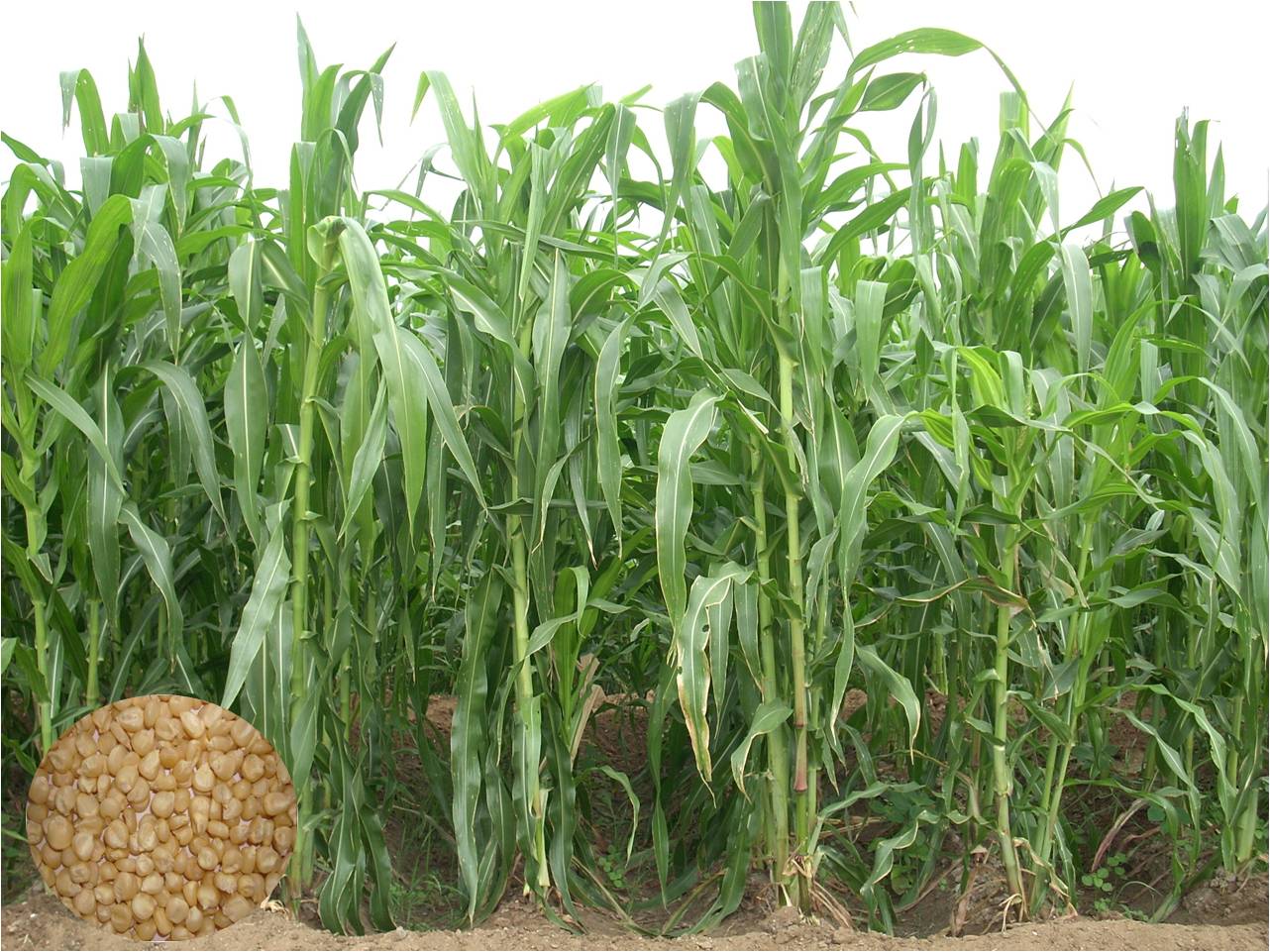|

Season and Varieties
Season : Throughout the year for fodder in all districts under irrigated condition.
Varieties : African Tall (Composite variety)
Yield Potential and Quality Characters
| Characters |
African Tall |
| Green fodder yield (t/ha) |
60.00 |
| Crude protein (%) |
9.80 |
| Dry matter (%) |
17.65 |
Crop Production:
1.Preparatory Cultivation
- Form ridges and furrows 60cm apart after ploughing and incorporation of FYM
2.Seed Rate
3. Spacing
4. Manures and fertilizers
- Basal
FYM 25t/ha ; 30:40:20 Kg NPK/ha
Top dressing
30Kg N/ha after 30 days after sowing .
5. Weed Management
- First weeding at 25th DAS. Further weeding based on necessity.
6. Water Management
- Immediately after planting; life irrigation on 3rd day and thereafter once in 10 days.
7. Harvest
- when the cob is in the milky stage.
8. Green fodder yield
Note:
* Fodder Maize can be intercropped with CO 5 or CO (FC) 8 Cowpea at 3:1 ratio and harvested together to provide nutritious fodder.
Crop Protection:
Fall armyworm Spodoptera frugiperda
Symptoms
- Windowing symptom.
- Heavy defoliation and large amount of faecal matter in the plant whorl.
- Bore holes in the developing internodes, damage on ear head.
Identification of Insect Pests
Egg : Dome shaped with flattened base.
Larva : Greenish with black head later darker, four black spots at tail end, White inverted “Y” mark on head.
Pupa : Obtect type and reddish brown in color.
Adult : Forewing : Male: Brown Female: Grayish brown
Hind wing: Male and Female: Iridescent silver-white
Management
- Deep ploughing and application of neemcake @ 250 kg per ha.
- Timely sowing and avoid staggered sowing. Follow crop rotation .
- Seed Treatment: Thiamethoxam 30 FS @ 10g or Beauveria bassiana @ 10 g per kg of seed or cyantraniliprole 19.8 % + thiomethoxam 19.8 % @ 4 ml/kg seed .
- Border crop: cowpea, sunflower, gingelly and marigold .
- Spray with Azadirachtin 1500 ppm at early stage.
Anthracnose and red rot (Colletotrichum graminicolum)
Field diagnostic symptoms
- Small red or purple spots on both surfaces of the leaf.
- White spot encircled by brown margin.
Favourable conditions
- Continuous rain, temperature of 28-30° C and High Relative humidity.
Survival and Mode of Spread
- Spread through seed and air-borne conidia and infected plant debris.
Integrated Disease Management
- Field sanitation and rouging of infested plant debris.
- Crop rotation
- Use resistant varieties or hybrids .
- Seed treatment: Captan or Thiram at 2 g/kg.
- Apply Bacillus subtilis or Trichoderma viride 2.5 kg/ha with 250 kg well decomposed Farm Yard Manure.
Seed Production
Land Requirement
- Land should be free from volunteer plant.
- The previous crop should not be the same variety or other varieties of the same crop.
- It can be the same variety if it is certified as per the procedures of certification agency.
Isolation
- For certified quality seed production, a distance of 200 m (African Tall) all around the field from the same and other varieties of the crop should adopted.
- Seed rate :20 kg/ha.
- Spacing : 60 x 20 cm (65 x 15 cm)
- Fertilizer requirement: Apply NPK @ 175 : 90 : 90 kg / ha + 25 kg ZnSO4 / ha as basal
Harvest
- Seeds attained physiological maturity on 40th day after anthesis.
Seed Treatment
- Carbendazim @ 2 g / kg of seed along with carbaryl @ 200 mg / kg of seed.
- Treat the seeds with halogen mixture (CaOCl2 + CaCO3 + arappu leaf powder mixed in the ratio of 5:4:1 @ 3 g / kg as eco-friendly treatment.
Storage
- Short term storage in gunny/cloth bag (8 - 9 months) with 9-10% moisture content .
- Medium term storage in polylined gunny bag (12 - 15 months) with 8 - 9 % moisture.
- Long term storage in 700 gauge polythene bag (> 15 months) with <8% moisture. .
|

